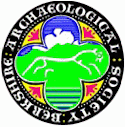Berkshire Archaeological Journal
Berkshire Archaeological Society, 2008. https://doi.org/10.5284/1000017. How to cite using this DOI
Data copyright © Berkshire Archaeological Society unless otherwise stated
This work is licensed under the ADS Terms of Use and Access.
Primary contact
Berkshire Archaeological Society
19 Challenor Close
Wokingham
Reading, Berkshire
RG40 4UJ
England
Resource identifiers
- ADS Collection: 787
- DOI:https://doi.org/10.5284/1000017
- How to cite using this DOI
The Berkshire Archaeological and Architectural Society was founded in 1871 and, in 1878, started publishing annual reports and transactions. These publications came to an end in 1883. In 1889, the Society launched the Quarterly Journal of the Berkshire Archaeological and Architectural Society. It was bound with eight parts per volume. Three volumes were produced by 1895 when the last of these journals was published.
In 1895, a number of groups agreed to work together to produce the Berks, Bucks and Oxon Archaeological Journal. These groups were the Berkshire Archaeological Society, The Newbury District Field Club, The Oxford Architectural and Historical Society, The Oxford University Antiquarian Society, and The Ladies Brass-rubbing Society of Oxford.
From 1895 until 1918, this journal was produced with four parts per volumes, the parts being published in April, July, October and January over a 12 month period. From 1919, the journal was produced with two parts per volume. In 1930, the joint publication came to an end.
In 1931, starting with volume 35, the Berkshire Archaeological Society began publishing the Berkshire Archaeological Journal at the rate of two parts per volume; one in the spring and the other in the autumn. These arrangements changed in 1943 when volume 47 was produced as a single publication. Since then the journal has been produced as a succession of single issues produced initially every year and latterly every two or three years.
This collection will be released in a series of installments. As the Berkshire Archaeological Society finishes digitising the journals in their collection, the ADS will be making them available.
p>The Berkshire Archaeological Society journal series is available via the ADS Library:





